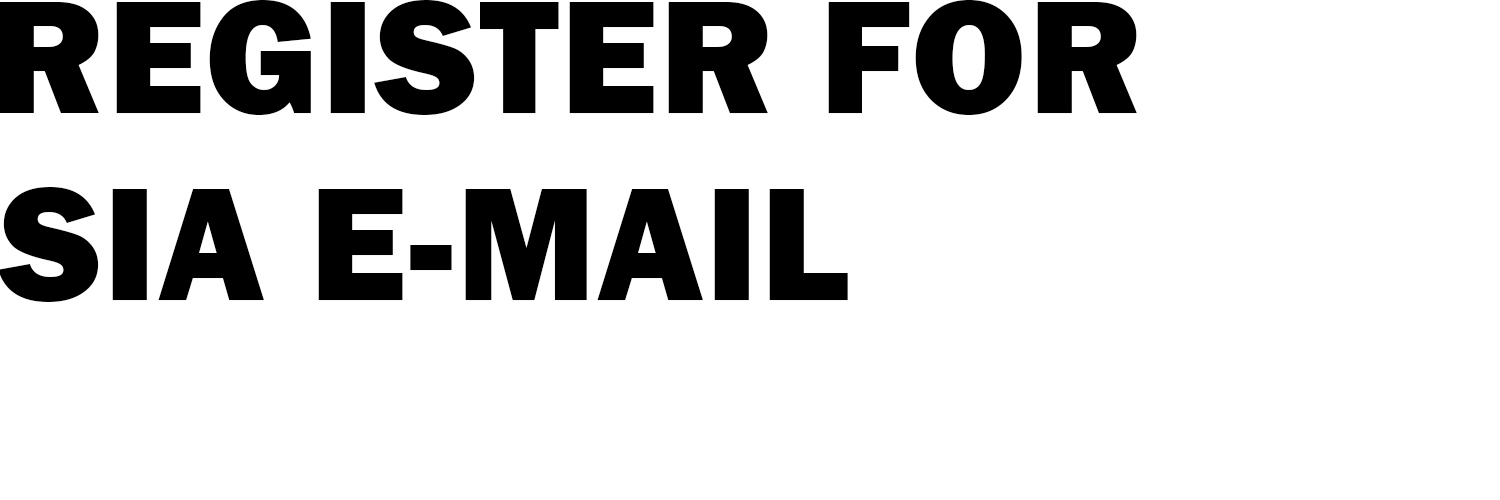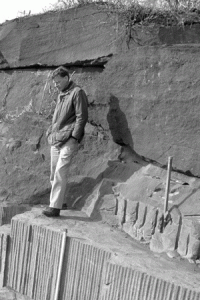General Tools Award 2010 – Robert Gordon
Robert Gordon’s distinguished career as a metallurgist, geologist, archaeologist, historian, and teacher spans more than fifty years. For most of that time he has applied his extraordinary skills to the study and promotion of industrial archeology, becoming the gold — or, in his case, perhaps the iron — standard for the application of scientific method to our field. His incredible record of research in archives, in laboratories, and in the field has resulted in a stack of well-illustrated publications and archaeological reports taller than any member of the SIA. Equally impressive is his generosity as a teacher and advisor, his mesmerizing abilities as a speaker or discussion leader, and his passion for making people see and preserve the industrial history around them. These accomplishments make him uniquely qualified for the General Tools Award.
Like many senior SIA members, Bob’s interest in IA began before there was a name for our obsession. Growing up in northwestern Connecticut, he acquired hands-on skills in machine-shop practices, explored many of the region’s waterpowered mills and iron furnaces, and developed a fine eye for site geography while still in high school. He never lost these interests, and as material studies of historic industries began in earnest a generation ago, he soon became a pioneer in the application of scientific method and environmental analysis to a wide range of archeological field and laboratory projects. His detailed technical drawings, hand-delineated maps, and revealing photographs beautifully illustrated his reports. There are two common threads to Bob’s research: an understanding of the historical processes involved in making and shaping industrial materials, and an ability to use physical evidence for investigations ranging in scale from microscopic identification of metallurgical processes to descriptions of how drainage basins were managed for waterpower. He was among the first to analyze waterpower sites using modern hydrological methods. He has conducted numerous imitative experiments with both operating machinery and hand tools. He can read the faint traces of filing on metal parts or the folded strata in the exposed wall of an open pit mine as well as well as literary scholars can read a poem. His ability to relate archaeological features to actual work done by people long dead is remarkable. Some of us can recognize a pile of slag, but very few of us can not only figure out how the slag was made but also use the volume of the slag pile to tell us how much metal was produced. From understanding process, he has been able to interpret artisanal skills in ways which have informed the work of labor historians as well as archaeologists.
Bob’s research has been at the core of what industrial archeology has accomplished as a field of study over the last twenty-five years. The General Tools Award is not given simply for academic publication, but we would be remiss if we did not acknowledge the tremendous importance of Bob’s many books and countless articles, which have introduced a wide range of readers to our field and informed the efforts of preservationists throughout the country. The Texture of Industry, co-authored with Patrick Malone, is still the gold standard for a new generation of students. He has won the SIA’s Norton Prize three times (a record), and has contributed to the SIA’s record of encouraging important scholarship by helping edit two special issues of IA and, more recently, serving on the current Vogel Prize Committee. His exemplary writing on industrial archaeology has also earned him prizes and citations from the Society for the History of Technology, the American Institute of Architects, and the Association of American Publishers. The Smithsonian Institution honored him with a Regent’s Fellowship and encouraged him to work with the collections in the National Museum of American History. He soon had old machinery cutting metal once again to assess the production capabilities of the industrial past.
Bob’s experience as a surficial geologist, metallurgist, and historian have made him an almost unique historical geographer and have inspired his articles, books, lectures, field guides for students and professionals, and course materials on landscape changes related to industrial history. His ability to present complex, long-term patterns in readily-accessible language has instructed large numbers of students, archaeologists, and historians in the origins of the landscapes they see today, which are often deceptively bucolic. His field guides and some of his publications, notably his industrial heritage guide book for northwestern Connecticut co-authored with Michael Raber, are designed to get people out to see industrial history on the ground. His particular interest in old roads and turnpikes informs many of his suggested routes.
Bob’s influence as a teacher and colleague has been as important as his research. Few who have worked with him have not learned something new, and he will share what he knows with anyone interested enough to ask. He has taught many people who are not industrial archeologists to recognize and preserve industrial sites. His numerous, often remarkable lectures have been a major part of his legacy as an advocate for the study and preservation of industrial sites. No one attending one of his talks is likely to forget his clarity of presentation, his animated performance, and his independence from textual prompts: the man can say more without notes, and usually say it better, than most of us can with them. In addition to 8-10 talks given at national and regional SIA meetings, Bob has been a regular speaker at Ironmaster conferences, at numerous conferences on historical landscapes and industrial transformations of Connecticut towns and cities, before historical societies in New York and Connecticut, and at many other professional organizations including Colonial Williamsburg, Sturbridge Village, the Smithsonian, the New Haven Preservation Trust, the American Philosophical Society, and the Pennsylvania Historical Association. When a public school teacher asked him to speak at a high school in Danville, PA, a former iron-making center, he came hundreds of miles with a tray of well-chosen slides in hand (and asked no fee for his services).
Bob Gordon and his lab at Yale have been a magnet for many dozens of students, ranging from undergraduates to retired engineers, almost all of whom have become dedicated to industrial archeology including several who explored early industries in Africa and South America. The services that he has provided to contract archaeologists, museum professionals, and cultural resource managers have expanded their practical capabilities and broadened their intellectual horizons. Typical of his generosity, he is currently converting his large collection of micrograph slides to digital format, for the use of future researchers. His enthusiasm, acumen, and modesty have made him not just a teacher, but an IA missionary.


